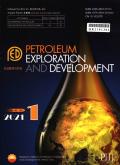Surrogate model for reservoir performance prediction with time-varying well control based on depth generative network
IF 8
Q1 ENERGY & FUELS
引用次数: 0
Abstract
This paper proposes a novel intelligent method for defining and solving the reservoir performance prediction problem within a manifold space, fully considering geological uncertainty and the characteristics of reservoirs performance under time-varying well control conditions, creating a surrogate model for reservoir performance prediction based on Conditional Evolutionary Generative Adversarial Networks (CE-GAN). The CE-GAN leverages conditional evolution in the feature space to direct the evolution of the generative network in previously uncontrollable directions, and transforms the problem of reservoir performance prediction into an image evolution problem based on permeability distribution, initial reservoir performance and time-varying well control, thereby enabling fast and accurate reservoir performance prediction under time-varying well control conditions. The experimental results in basic (egg model) and actual water-flooding reservoirs show that the model predictions align well with numerical simulations. In the basic reservoir model validation, the median relative residuals for pressure and oil saturation are 0.5% and 9.0%, respectively. In the actual reservoir model validation, the median relative residuals for both pressure and oil saturation are 4.0%. Regarding time efficiency, the surrogate model after training achieves approximately 160-fold and 280-fold increases in computational speed for the basic and actual reservoir models, respectively, compared with traditional numerical simulations. The reservoir performance prediction surrogate model based on the CE-GAN can effectively enhance the efficiency of production optimization.
基于深度生成网络的时变井控储层性能预测替代模型
本文提出了一种在流形空间内定义和求解油藏性能预测问题的新型智能方法,充分考虑了地质的不确定性和时变井控条件下油藏的性能特征,创建了基于条件演化生成对抗网络(CE-GAN)的油藏性能预测代用模型。CE-GAN利用特征空间的条件进化来引导生成网络向以前不可控的方向进化,并将油藏性能预测问题转化为基于渗透率分布、初始油藏性能和时变井控的图像进化问题,从而实现时变井控条件下快速、准确的油藏性能预测。基本(鸡蛋模型)和实际注水油藏的实验结果表明,模型预测结果与数值模拟结果非常吻合。在基本油藏模型验证中,压力和油饱和度的相对残差中值分别为 0.5% 和 9.0%。在实际油藏模型验证中,压力和含油饱和度的相对残差中值均为 4.0%。在时间效率方面,与传统数值模拟相比,训练后的代用模型在基本油藏模型和实际油藏模型的计算速度上分别提高了约 160 倍和 280 倍。基于 CE-GAN 的储层性能预测代用模型能有效提高生产优化的效率。
本文章由计算机程序翻译,如有差异,请以英文原文为准。
求助全文
约1分钟内获得全文
求助全文

 求助内容:
求助内容: 应助结果提醒方式:
应助结果提醒方式:


